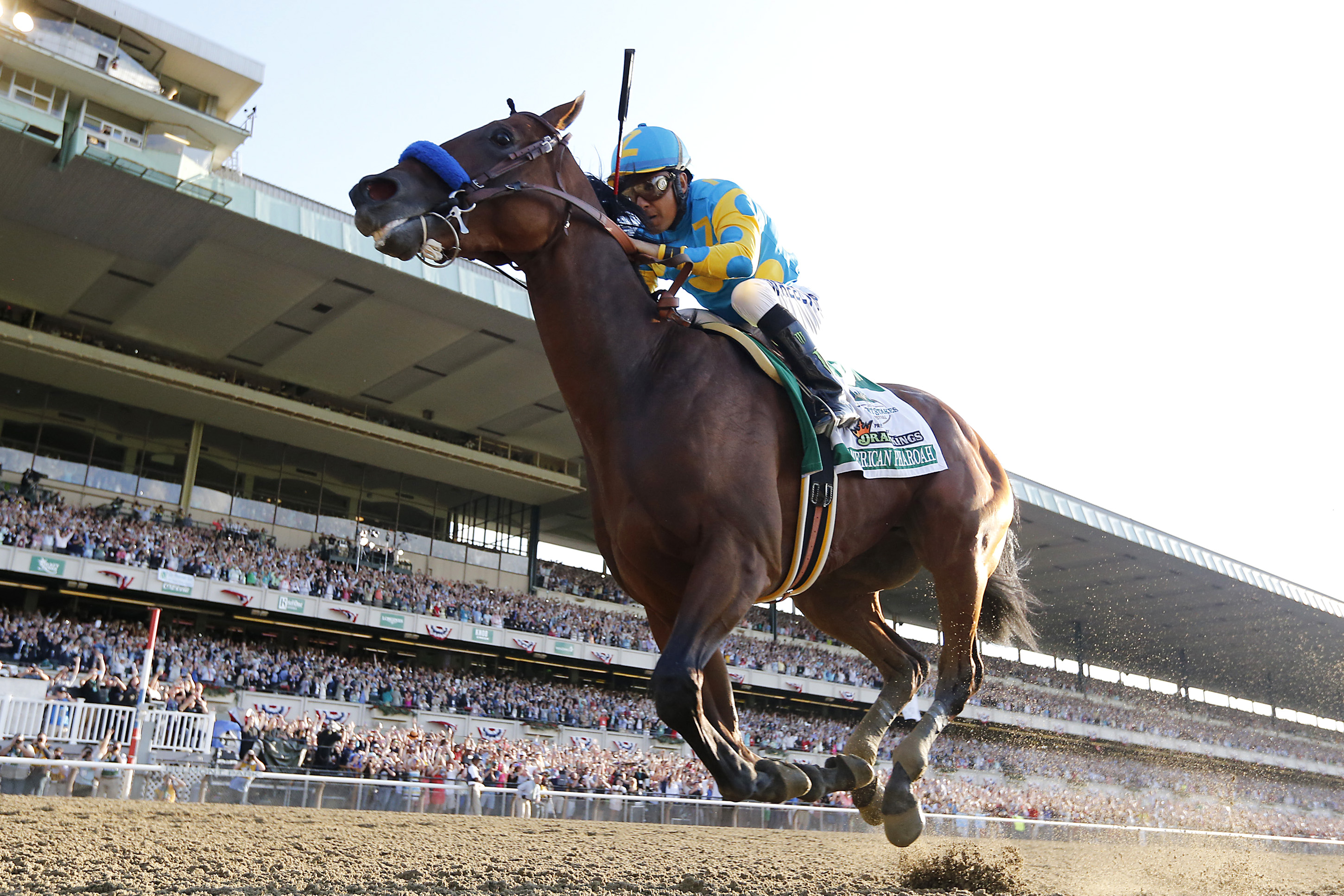The Breeders’ Cup: American Pharoah Wins Again
Photo Credit: NY Post
Every year October is characterized by candy, spooky decorations, and dressing in costume. This year, Halloween fell on a weekend, but before putting on their witch’s hats or Superman capes, tens of thousands of people completed their ensembles with elegant headwear or striking bowties at the 32nd Annual Breeders’ Cup.
The Breeders’ Cup took place on Friday, October 30 and Saturday, October 31 at Keeneland. The Breeders’ Cup World Championships is a series of races that showcase the best Thoroughbred racehorses worldwide. This year, the event, which was inaugurated in 1984, was referred to as a “Homecoming for the Ages.” For the first time in Breeders’ Cup history the races took place within the center of the Thoroughbred breeding industry; Lexington, Kentucky. This homecoming called for the ultimate choice in fashion with better opportunities to show off personal style than any Saturday night costume party. And it may as well be tradition to sport one over-the-top element in your outfit at the races.
For those of you who do not know much about stakes races (other than the popular fashion statements), let alone the races that collectively make up the World Championships in Thoroughbred racing, there are many components to how it works. The Breeders’ Cup is the richest two days in sports. Over Twenty-Six million dollars is paid out in purses and awards; the size of the purse varies by race, ranging from $500,000 to $5 million.
This monetary incentive exemplifies the importance of establishing who the best horses are before the races can begin. Only fourteen horses can qualify for each race, and there are a number of eligibility requirements that vary between races. Following their eligibility, horses can gain entry in one of three ways: by winning a Breeders’ Cup Challenge race, by ranking highest in their performance in major races during the year, and seven horses are selected by a panel of experts.
Fans were able to attend the racetrack on October 25-29 to watch the contenders prepare, and tickets were sold for other supporting events throughout the week. Attendance for the Breeders’ Cup, which typically only trails the Kentucky Derby, the Preakness Stakes, and the Belmont Stakes, had record-breaking numbers and the largest Friday crowd since the Championships extended to a twoday event in 2007. This year truly was a “Homecoming for the Ages.”
Just as baseball ends the year with the World Series, football with the Super Bowl, and hockey with the Stanley Cup, Thoroughbred racing has the Breeders’ Cup World Championships. There are 13 races, but the $5 million Breeders’ Cup Classic is the defining event to end the international racing season as it is run last. The anticipation of the final event adds to all of the excitement, and the official website even states, “The best race at the Breeders’ Cup? The Next One.” The Classic has the highest purse, is open to horses three-years of age and older, and is run at the “classic“ distance of one and a quarter miles on a dirt track. This is the race that receives the most attention, and I could not finish an article about the Breeders’ Cup without highlighting the winner.
Triple Crown winner American Pharoah, ridden once again by jockey Victor Espinoza, finished his career with one last hoorah! The three-year-old colt, and fan favorite, won the Classic by six and a half lengths, with a track record time of 2:00.07, a colossal 5.29 seconds faster than the old record. Finishing second behind American Pharoah was Effinex, followed by Honor Code in third.
Just like he has done in the past, American Pharoah charged to the lead the moment the gates opened. His seven opponents were left to chase him for the entire mile and a quarter. Effinex contributed to an exciting race, remaining close to American Pharoah for the first mile, but American Pharoah increased the gap in the last stretch. American Pharoah’s trainer, Bob Baffert, described the feel-good story that those who follow horse racing will understand and anyone who witnessed the young horse’s career can relate to: “It’s a horse racing fairy tale and I just happen to be in it.”
Hard work does pay off. American Pharoah earned a spot in history this past spring by sweeping the Kentucky Derby, Preakness, and Belmont Stakes, becoming a member of the elite group of only twelve to do so, and ending the thrity-seven year Triple Crown drought. Instead of stopping there, though, and despite the possible risks, American Pharoah’s team kept him on the racetrack. He won all but two of his starts, earning more than $8.5 million for his Egyptian-born owner, Ahmed Zayat. Winning the Breeders’ Cup Classic was a crowning moment to end an unparalleled career. American Pharoah is a horse we will not soon forget, a name that will be remembered with the likes of Seabiscuit and Secretariat.



